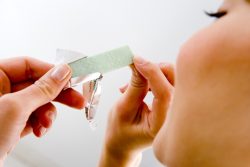 You might want to add chewing gum to your list of unexpected microplastic sources. A new preliminary study reveals that just one piece can release up to thousands of microplastic particles directly into your saliva.
You might want to add chewing gum to your list of unexpected microplastic sources. A new preliminary study reveals that just one piece can release up to thousands of microplastic particles directly into your saliva.
Analysis showed that just one gram of chewing gum released an average of around 100 microplastic bits, and some samples releasing as many as 637 microparticles per gram. Since a single stick of gum often weighs between one and several grams, the total exposure could be significantly higher.
On average, someone who regularly chews gum could end up ingesting around 30,000 of the particles annually. The researchers set out to determine how much microplastic exposure might result from chewing both natural and synthetic gums. The researchers examined five different brands of synthetic gum and five varieties of natural gum.
The test consisted of one participant chewing each gum for four minutes, with researchers collecting saliva samples every 30 seconds using lab tubes. After chewing, the participant thoroughly rinsed their mouth several times with highly purified water. These rinses were then combined with the saliva samples to capture any remaining microplastics. The full process was repeated seven times for each gum variety.
Additionally, some gum samples were chewed for a full 20 minutes, with collection of the saliva every two minutes. This allowed researchers to assess how chewing duration affected the amount of microplastics released.
Interestingly, 94% of microplastics were emitted during the first eight minutes of chewing, suggesting most of the release happens early on. The researchers discovered that natural gums offered little advantage. On average, one gram of synthetic gum contained 104 microplastic particles, while natural gum wasn’t far behind, with 96 particles per gram.
To help limit microplastic exposure from gum, the researchers suggest chewing a single piece for a longer period rather than frequently switching to a new one. The study was only able to detect microplastics 20 micrometers or larger due to the limitations of the equipment and methods used. As a result, smaller particles, such as nanoplastics, may have gone undetected, highlighting the need for further research into the potential release of these tiny plastics during chewing.
To view the original scientific study click below:
Chewing gum can shed microplastics into saliva, pilot study finds





